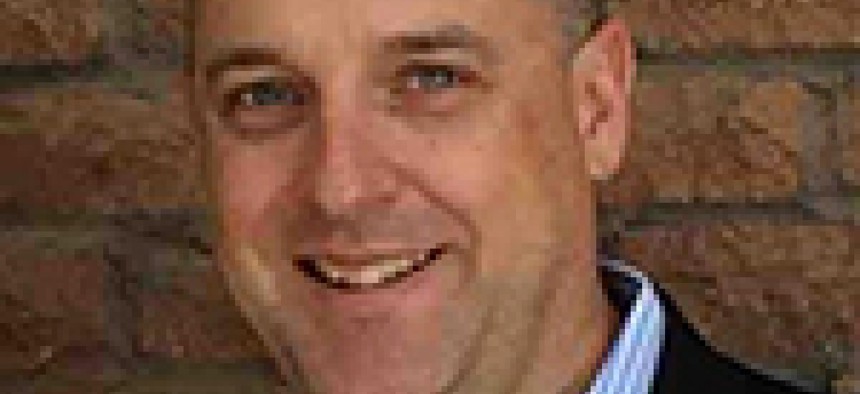Is your BD organization ready to face today's market?

In a two-part series we explore how today's changing market requires you to honestly assess your BD structure and put the right kind of leadership in place.
Editor’s Note: This is part one of a two part series looking how a changing environment demands a new BD leadership. Read part two, click here.
Today’s rapidly changing political landscape signals a time for enterprises to perform an honest, rigorous assessment of their business development organization’s effectiveness against the backdrop of an unpredictable, uncertain environment.
In part one of a two part series, we lay out the formula for a professional assessment of the strategic, operational and tactical elements of a BD organization. Part two continues the discussion with an exploration of the three distinct business environments that can surround an organization, and the characteristics required of BD leaders that excel within them.
Assessing the Strategic, Operational and Tactical Strength of a BD Organization
A well-established, resilient BD organization has the strategic, operational and tactical mechanisms in place to flexibly adapt to changing environments. To gauge the current state of your organization and its fitness to survive and prosper in this uncertain atmosphere, ask yourself these three important questions:
- Is my BD organization operating at optimal efficiency and effectiveness with the shortest sales cycles?
-
Does my BD organization have a proactive, customer-centric mindset throughout the organization?
- Does my BD organization interface well with strategic planning, proposal and project management functions?
If you have answered ‘No’ to any of these questions and you’re considering making changes to your organization - no matter how small the changes may seem - conducting a thorough assessment up-front can help confirm you are making the right moves.

Image source: MBDi
A solid revenue generation effectiveness assessment is designed to help you identify problematic areas in your organization. It methodically moves your BD organization through an examination of the eight critical components in the strategic, operational and tactical levels. An assessment will help you identify gaps and misalignments, and take corrective action from top to bottom to ensure your organization is positioned to deliver the highest degree of revenue results.
Strategy, Capability and Culture
Of the three components, culture change is most difficult to achieve. However, if not addressed, culture can quickly impact the other components. Trying to change strategy without changing culture quickly results in culture undermining the new strategy. Capability may change based on strategic direction, and once again, culture may strongly impact the success of introducing new offerings.
Test Your Strategy, Capability and Culture
- What short-term and long-term strategies do I have in place? Are they achievable?
- What revenue goals have been set for my organization? Do I have enough resources to realize them?
- How do my product and service offerings align with customers current and future needs?
- What is the cultural ‘mental health’ of my organization? Do we have a proactive, customer-centric mindset throughout?
- How would I rate the overall capacity of my team to execute on strategic objectives?
Organization Structure
Organization Structure must be assessed in terms of its effectiveness and efficiency. Risks and challenges need to be addressed, such as the identification of existing organizational synergies and the cultural implications of any changes. While re-alignment of organization structure can be extremely disruptive, it is seldom seen as significant strategic change.
Test Your Organization Structure:
- Is my BD organization structured for optimal performance? Do I have enough BD assets?
- Do I believe my corporate and business unit BD organizations are aligned?
- How often do I worry about reduced BD efforts due to competing roles and priorities?
Process, Plans, People and Leaders
Process and plans are audited and reviewed to identify inefficiencies, develop functional and consistent formats to reduce operational costs and ensure all reporting reflects an accurate picture of the organization’s current and future status. Process and plans are often tweaked and refined, but seldom are they completely removed or replaced.
Test Your Process and Plans:
- What are our operational and tactical BD plans? How good are they? How well do we communicate and document them in our business?
- How robust – and valid - is our pipeline? Can we reliably base important decisions on it?
- How well does our process identify and qualify leads and opportunities? How many have been missed?
- Will our current process be able to facilitate reaching our strategic goal?
Identifying the need for and justifying a change in BD personnel is a fairly routine process. It focuses on the team’s conceptual and mechanical skills as well as their behavior. It separates the hunters from the farmers, and identifies whether the team is ‘catching’ or ‘shaping’ opportunities.
Test Your People:
- How is my team currently performing? Are they struggling conceptually or mechanically?
- What concerns me the most about my team’s behavior? Do they have thinking, discipline or process issues?
- Does my team focus on pop-up opportunities rather than focusing on shaping opportunities early?
This leaves the final component, BD leaders, and the pressing question of “Does this changing environment demand a new BD leadership approach?
In part two of this series, we'll explore the changing environments and the characteristics of the BD leaders that excel within them. We will explore:
- The Transition Environment and the Transition BD Leader
- The Growth Environment and the Growth BD Leader
- The Sustain Environment and the Sustain BD Leader

